
6 minute read
Tidbits Admires Opals • Vol. 20: #8 • (2024-02-18) Tidbits of Coachella Valley
It’s said that people in ancient Greece thought opals were formed from the tears of joy shed by Zeus. In reality, opal is formed in subterranean crevices in rock due to the coming and going of silica-laden water over mellennia. Follow along as we explore the facts about this precious, brightly-colored stone that is highly prized by kings and collectors alike!
• The word “opal” dates back to around 250 BC, starting with the Sanskrit “upala” which became the Latin “opalus” meaning “precious stone,” then morphed into the Greek “opalliois” meaning “changing color.”
THE OPAL ORIGIN
• Second only to oxygen, silicon is the most common element in the crust of the Earth. When it combines with oxygen, it forms silica, the major component of sand. When water slowly trickles through silica, some of the silicon dissolves.
• When silicon-rich water becomes trapped in cracks and fissures in underground rock, the water eventually evaporates, leaving the silicon behind. The silicon residue forms into gel-like balls that eventually harden into microscopic spheres.

• The formation process continues relentlessly, repeated over thousands of years of sporadic rainfall, the rise and fall of the water table, or the coming and going of ponds, seas, and streams. Layer upon layer of silicon spheres collect in the same crevice, forming opal gems, each with its own unique coloration and design.
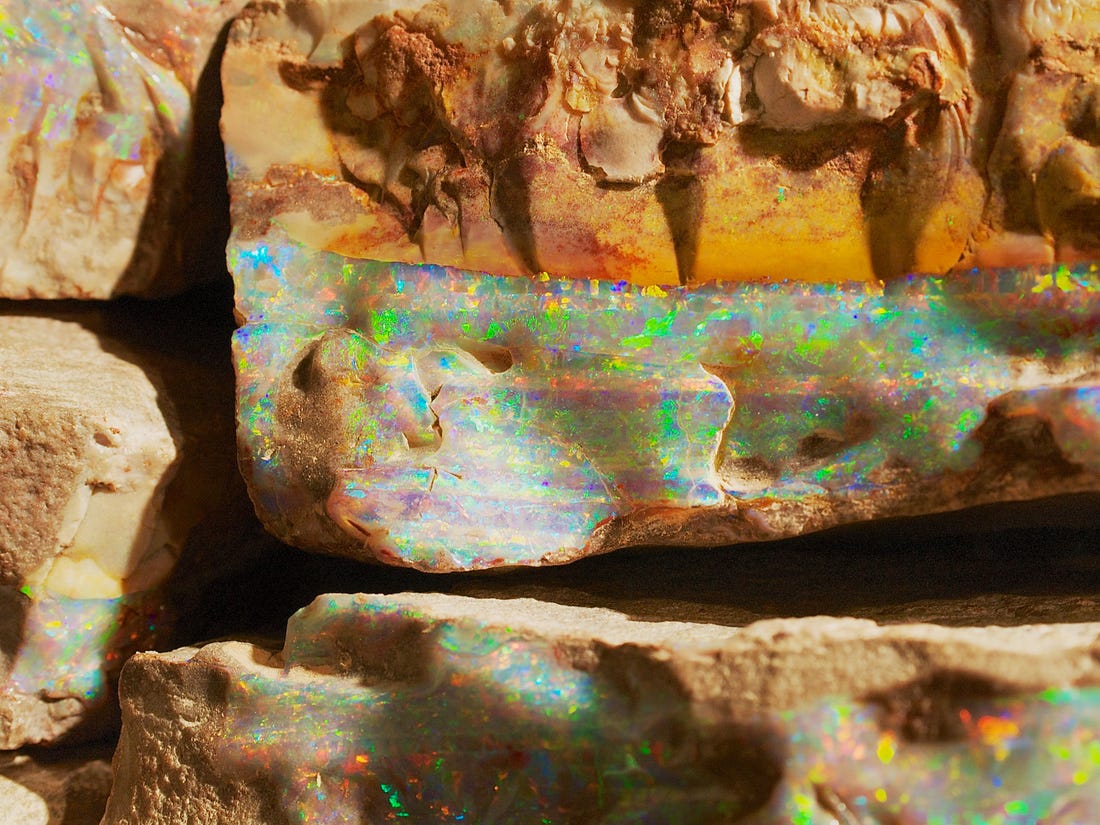
• Sometimes the spheres are piled up in neat and orderly stacks, and other times they end up in random disorderly heaps. Think of this in terms of marbles contained side-by-side on cookie sheets stacked one on top of another.
COLORATION
• When light hits an opal with a regular densely packed lattice of spheres, the light bounces off the curves of the spheres and illuminates the gem in what is called the “play of light” or “the play of color.” These are called precious opals.
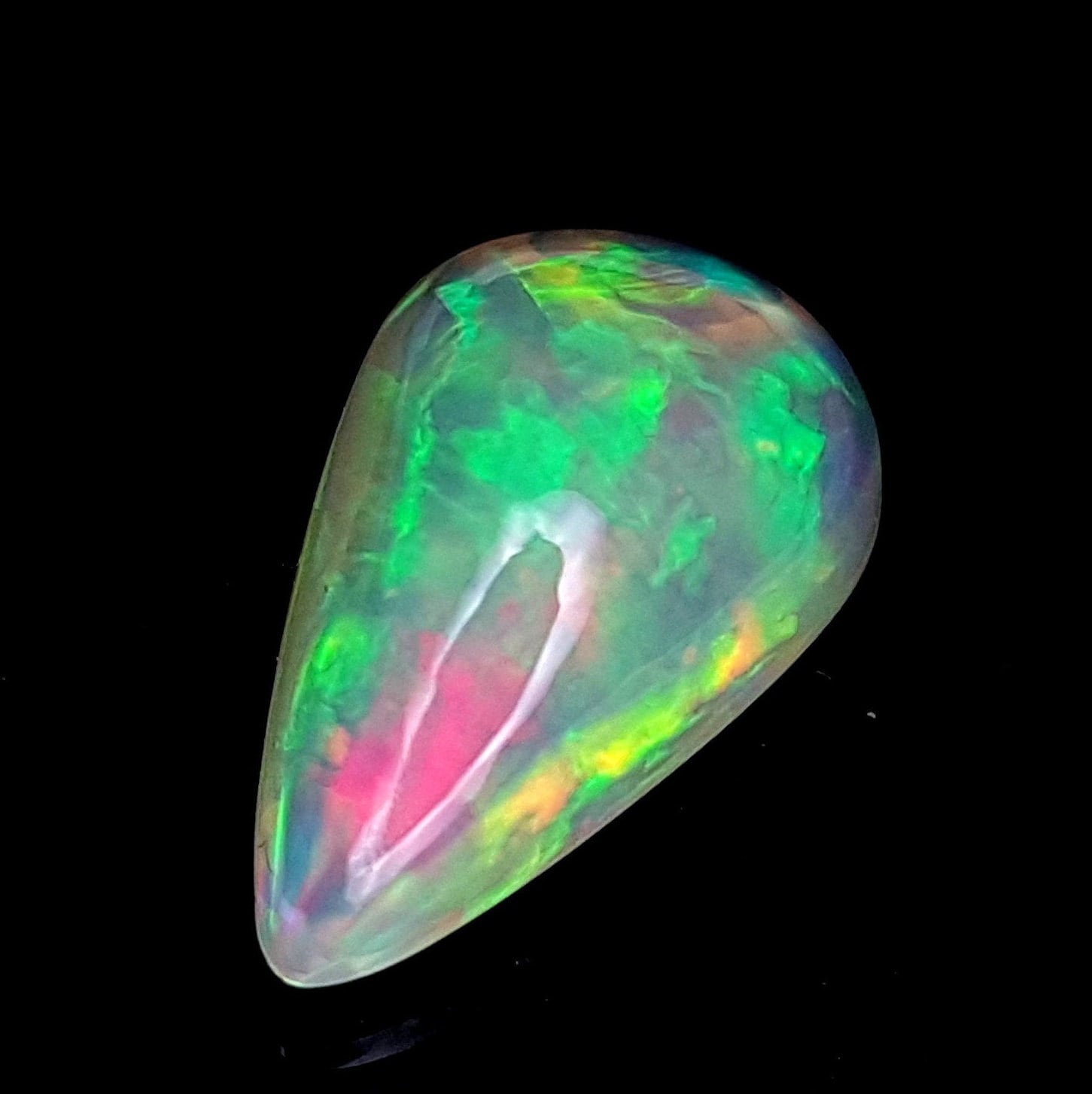
When light hits an opal with sloppy, disorganized piles of spheres, there is no refraction and no play of light. These lackluster stones are called common opals and display only a hazy-milky sheen or a common translucence. Opal miners refer to these rough and mostly worthless gems as “potch.”
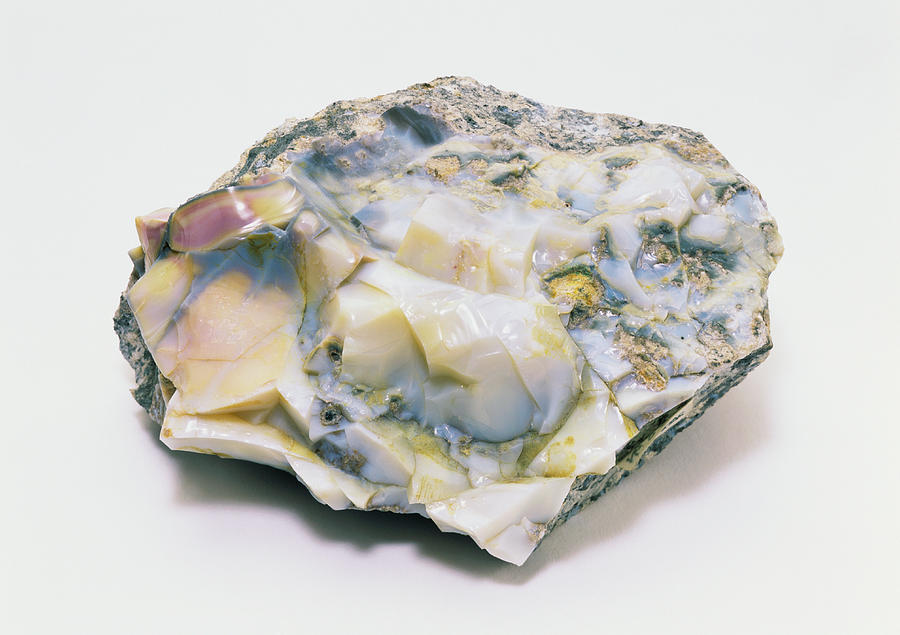
• Different colors are refracted depending on the size of the spheres. Silicon balls 0.2 microns wide refract blue and violet light; silicon balls 0.25 microns wide refract green light; and silicon balls 0.32 microns wide refract red light. This process of white light diffracting into all the colors of the spectrum is called “opalescence.” Every opal is entirely unique because of its own individual collection of silicon spheres.

• The background of opals, also called the body color, is most commonly white, grey, or green, though it can be all colors of the rainbow. The rarest background color is black, which sets off the play of colors in a spectacular fashion. Black opals are rarer than diamonds and almost as valuable.
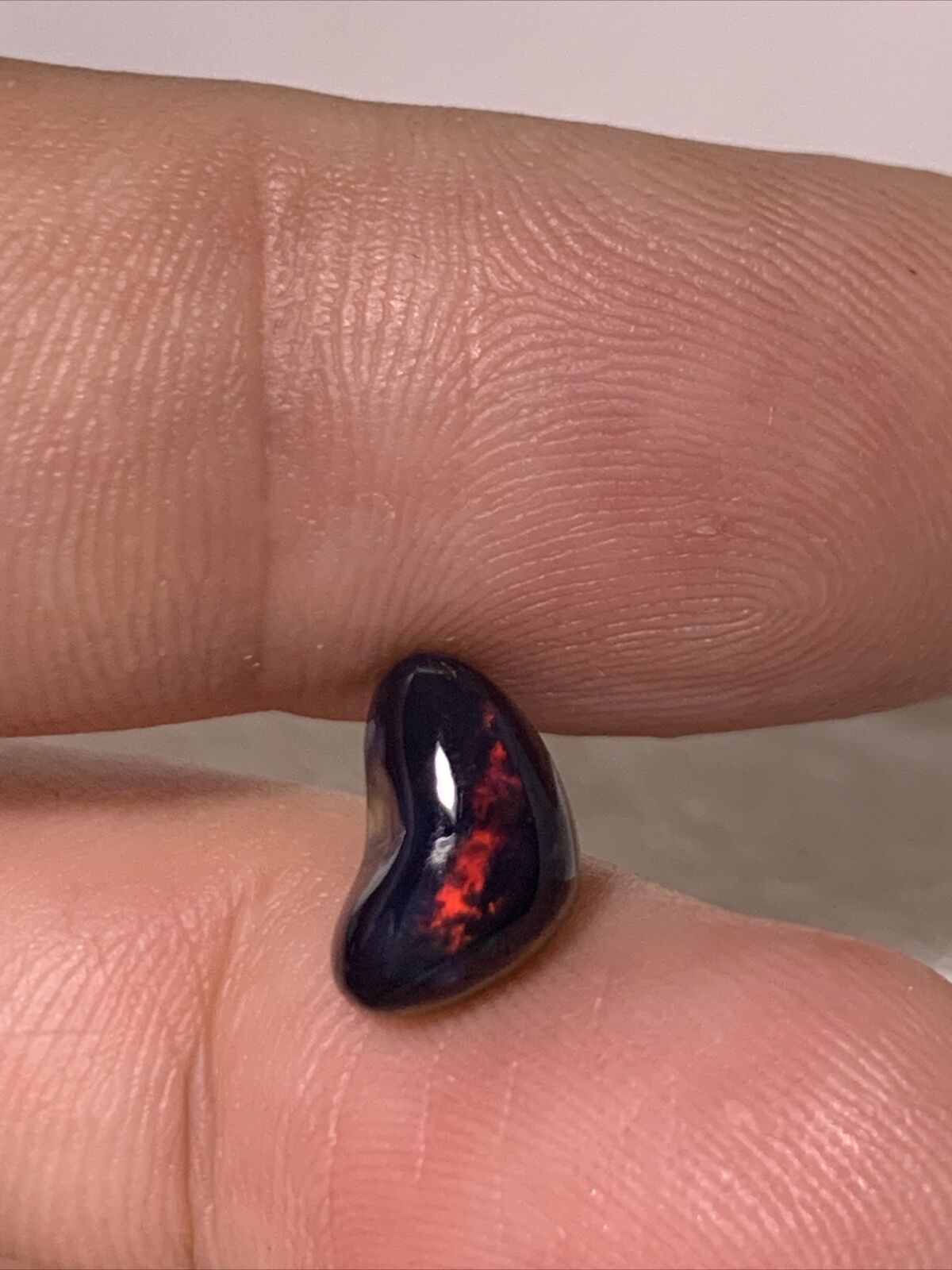
WHERE IT'S FOUND
• Opal isn’t technically a mineral because it‘s amorphous, lacking a definite crystalline structure. Instead, it’s classified as a “mineraloid” along with amber, pearls, and obsidian.
• Because opals can form in the smallest subterranean crevices where water seeps in, there have been instances where opal has formed inside bone, teeth, seashells, leaves, snails, and wood, filling the tiniest cavities with opal. Petrified wood has the identical chemical make up as opal.
• Australian opal miners have uncovered opallaced dinosaur fossils, the only place in the world where such phenomena have been found.
• One such example is called “The Virgin Rainbow” and it’s one of the world’s rarest and most expensive opals. It consists of the fossilized shell of an ancient ancestor of the cuttlefish, in which opal has taken the place of the cartilage.

It has an estimated worth of over $1 million and is now owned by the Southern Australia Museum in Adelaide.
• Another example is the opalized, fossilized skeleton of “Eric the Pliosaur.” Pliosaurs were large and ferocious marine predators during the Jurassic and Cretaceous periods.
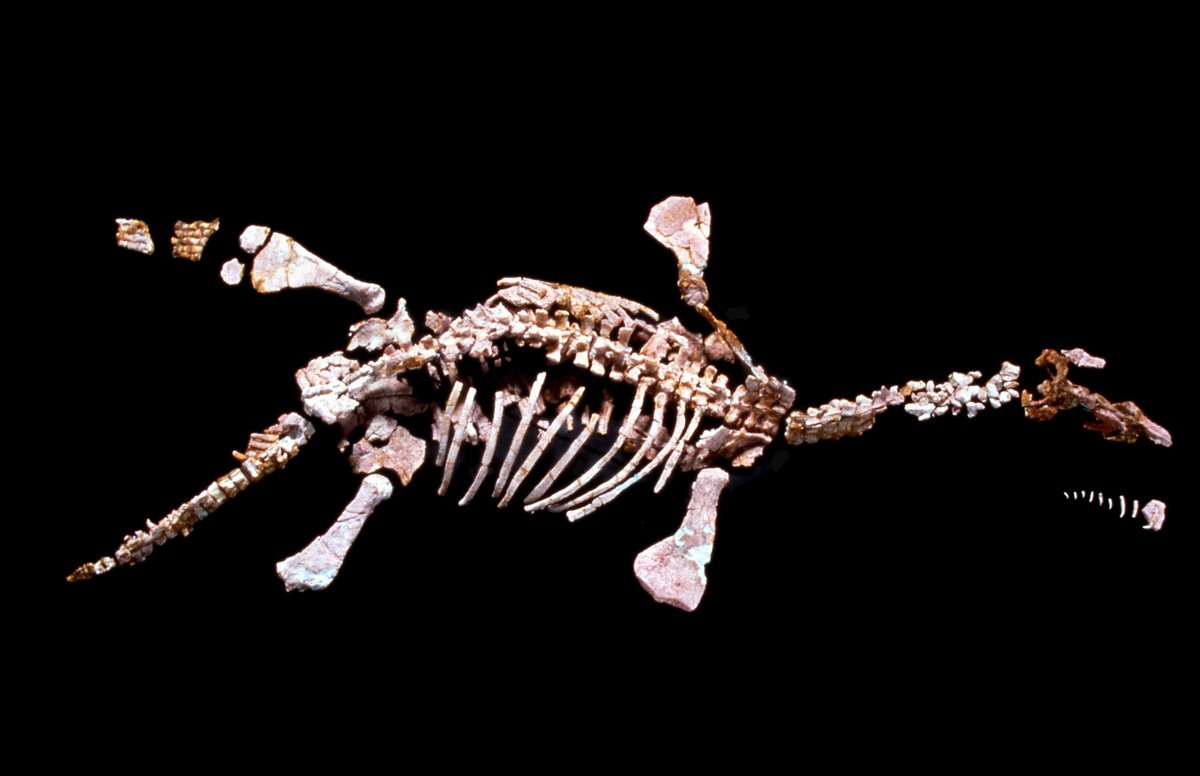
These formidable reptiles grew up to 40 feet long. Eric is a seven-foot specimen discovered in 1987 in Australia, in which not only are parts of the bones made of opal, but also the contents of the stomach containing the animal’s last meal are as well.
• Archeological evidence suggests that humans were mining opal in Nevada 8,000 years ago, and in Kenya around 6,000 years ago. But the first historically recorded discovery of opals was in the fourth century B.C. in the area now called Slovakia. Slovakia was the main source of opals until they were later discovered in Australia in the late 1800s.

• The town of Coober Pedy in South Australia (population 2,500) is known as the “opal capital of the world.” The town’s name springs from an Aboriginal term “kupa-piti” meaning “white fellas’ hole” referring to the fact that many of the town’s homes are cave-like abodes dug into the side of cliffs and embankments to protect them from the scorching heat of the Australian desert.
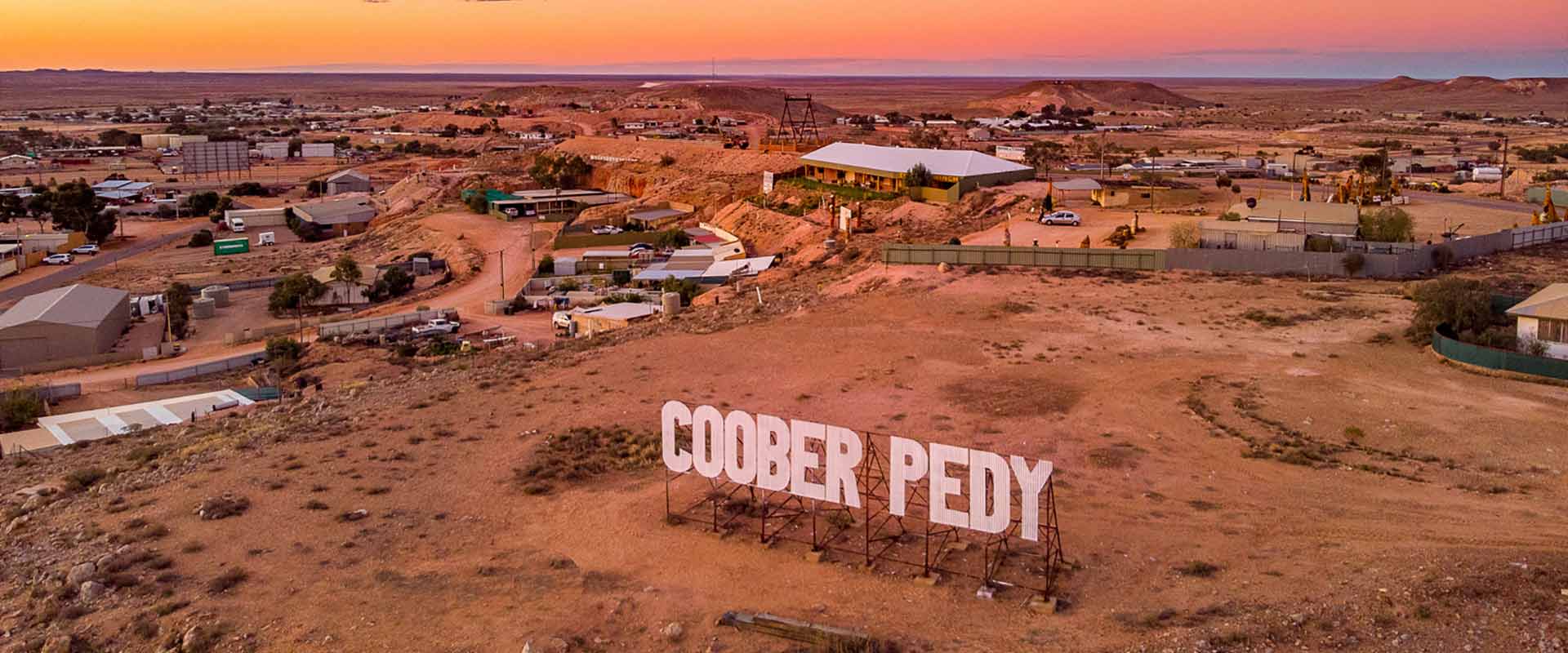
• The opal fields of Australia are bigger than the opal fields of the rest of the world combined. Opals are Australia’s national gemstone.

• The first clue that there are opals on Mars came with the discovery of a meteorite which originated from Mars that fell in 1911 in Egypt. The traces of opal found in the rock suggested that there was once water on the planet for a long enough time to form opal. Photos of Mars taken in 2008 by NASA’s Mars Reconnaissance Orbiter showed images of materials that scientists concluded were likely opal. In 2018, the Curiosity rover found traces of opal on the surface of the planet.
• If you wear opals, be aware that they are not as resistant to damage as other harder gems. Avoid exposing them to extreme heat, ultrasonic cleaners, and harsh chemicals. Don’t wear them during heavy physical activity to avoid cracking. Jewelers recommend storing them in a soft cloth bag to protect from scratches, and some advocate keeping them sealed inside a plastic baggie to preserve their moisture.


